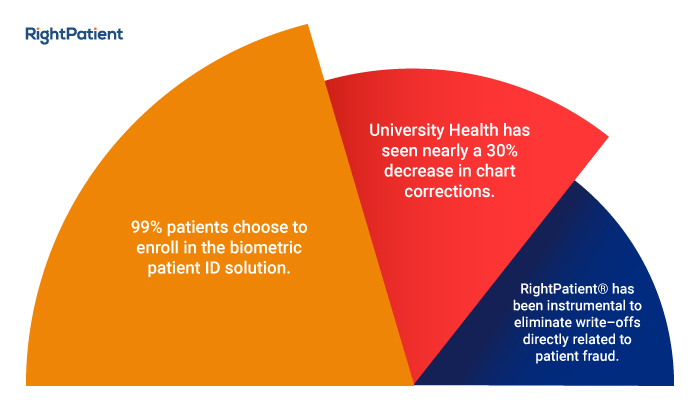Photo Biometrics Patient Identification Testimonial – University Health Care System

We always relish an opportunity to visit hospitals and healthcare organizations who have made the smart choice to adopt photo biometrics for patient identification. Who better to share their story about events and conditions that lead to their decision to invest in RightPatient® Cloud?
We had an opportunity to sit down with George Ann Phillips, Administrative Director, Revenue Cycle at University Health Care in Augusta, GA to ask her why the hospital decided to invest in photo biometrics to increase patient safety, reduce chart corrections, duplicate medical records, improve revenue cycle collections, and humanize health IT by linking the patient’s photo to their electronic health record (EHR). Prior to implementing RightPatient®, University’s situation was not much different than many other healthcare organizations – a desire to prevent duplicate medical records, improve patient safety, streamline registration, and improve the patient experience.

After carefully evaluating RightPatient® against other biometric modalities, University decided that photo biometrics was a smarter investment and would help them to achieve their aforementioned goals. University staff liked the fact that by capturing the patient’s photo and storing it in the RightPatient® Cloud, they suddenly had the means to identify patients at any point along the care continuum – before portal login, during telemedicine sessions, and prior to administering medication or providing any clinical service. Clinicians immediately offered positive feedback to George Ann saying that having the patient’s photo linked to their medical record was an outstanding way to personalize their approach and gave them additional piece of mind to avoid any medical errors.
George Ann also pointed out that she was much more comfortable implementing photo biometrics because it supported hospital infection control policies and did not require the patient to touch any device to avoid the risk of contracting an illness or spreading germs. RightPatient® is the only biometric patient ID solution that is contactless and the only solution that truly has the ability to identify a patient no matter where they are along the care continuum. No other biometric identification solution can claim this.
University’s return on investment (ROI) has been strong since adopting RightPatient®:
- 20% reduction in chart corrections
- 99% patient acceptance (54,000+ patients enrolled so far)
- Rapid deployment expansion to physician offices
- Positive feedback from C-suite
- Clinicians love seeing the patient’s photo
- Streamlined patient registration
- Improved patient experience
Take a moment to watch the short video here:
Thank you to George Ann Phillips and Beverly Bell from University for their assistance to make this video. Please share it with a friend or colleague!






 Brad Marshall is an Enterprise Development Consultant with RightPatient®. With several years of experience implementing both large and small scale biometric patient identification projects in healthcare, Brad works closely with key hospital executives and front line staff to ensure project success.
Brad Marshall is an Enterprise Development Consultant with RightPatient®. With several years of experience implementing both large and small scale biometric patient identification projects in healthcare, Brad works closely with key hospital executives and front line staff to ensure project success.